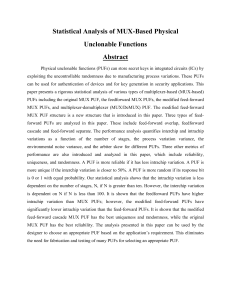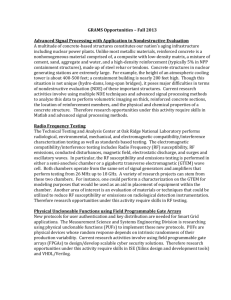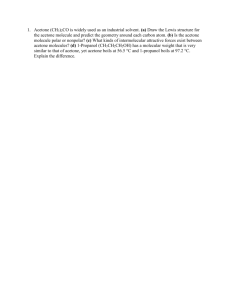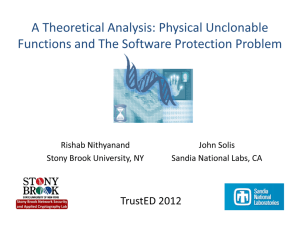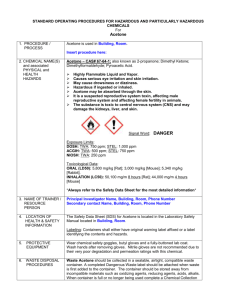Polyurethane Foam (PUF) Preparation
advertisement
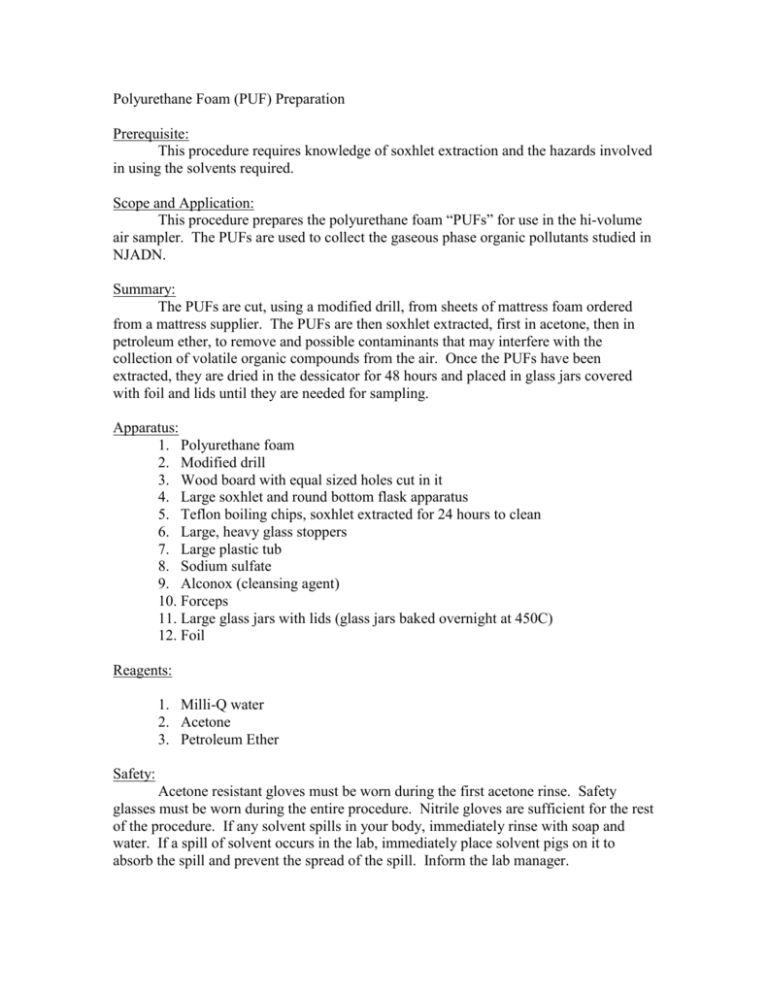
Polyurethane Foam (PUF) Preparation Prerequisite: This procedure requires knowledge of soxhlet extraction and the hazards involved in using the solvents required. Scope and Application: This procedure prepares the polyurethane foam “PUFs” for use in the hi-volume air sampler. The PUFs are used to collect the gaseous phase organic pollutants studied in NJADN. Summary: The PUFs are cut, using a modified drill, from sheets of mattress foam ordered from a mattress supplier. The PUFs are then soxhlet extracted, first in acetone, then in petroleum ether, to remove and possible contaminants that may interfere with the collection of volatile organic compounds from the air. Once the PUFs have been extracted, they are dried in the dessicator for 48 hours and placed in glass jars covered with foil and lids until they are needed for sampling. Apparatus: 1. Polyurethane foam 2. Modified drill 3. Wood board with equal sized holes cut in it 4. Large soxhlet and round bottom flask apparatus 5. Teflon boiling chips, soxhlet extracted for 24 hours to clean 6. Large, heavy glass stoppers 7. Large plastic tub 8. Sodium sulfate 9. Alconox (cleansing agent) 10. Forceps 11. Large glass jars with lids (glass jars baked overnight at 450C) 12. Foil Reagents: 1. Milli-Q water 2. Acetone 3. Petroleum Ether Safety: Acetone resistant gloves must be worn during the first acetone rinse. Safety glasses must be worn during the entire procedure. Nitrile gloves are sufficient for the rest of the procedure. If any solvent spills in your body, immediately rinse with soap and water. If a spill of solvent occurs in the lab, immediately place solvent pigs on it to absorb the spill and prevent the spread of the spill. Inform the lab manager. Procedure: 1. Cut PUFs using the drill and wooden board (to ensure that all PUFs are the same size). 2. Place PUFs in a large plastic bin with lid until ready to clean. 3. Turn on the chiller to allow it to reach the set point while the initial cleaning steps are occurring. 4. Place cut PUFs in a large bin and rinse with milli-Q water and a small amount of alconox. 5. Rinse the PUFs with milli-Q water only until no soap foam comes out of them. 6. Empty the plastic bin of all soapy water and refill with the PUFs. 7. Pour acetone over the PUFs and squeeze the acetone through each PUF several times (during this step you MUST wear acetone-proof gloves). (PUFs that have already been used for samples and extracted can be cleaned by following the instructions from here on) 8. Rinse the round bottom flask, soxhlet and condenser with acetone. 9. Add sodium sulfate and Teflon chips to the bottom of the large round bottom flask. 10. Using forceps, take the PUFs out of the acetone bath and place in the soxhlet, squeezing out as much acetone as possible before putting each PUF into the soxhlet. 11. Place a few large, glass stoppers atop the PUFs. 12. Attach the soxhlet to the round bottom flask. 13. Fill the soxhlet with acetone until it cycles. 14. Once the first cycle has completed, add more acetone, to cycle again. 15. Turn on the rheostat and make sure the acetone is cycling through the PUFs. 16. Allow the PUFs to extract for 24 hours. 17. Turn off the rheostat after 24 hours and allow the round bottom flask to cool. 18. Cycle and acetone remaining in the soxhlet through and empty into the proper waste receptacle. 19. Fill the soxhlet with two cycles of petroleum ether. 20. Turn on the rheostat and make sure the petroleum ether is cycling through the soxhlet. 21. Allow the PUFs to extract in petroleum ether for 24 hours. 22. After 24 hours, cycle any remaining petroleum ether through the soxhlet and pour into the proper waste jar. 23. Using hexane-rinsed tongs, carefully remove the PUFs from the soxhlet and place in an acetone and hexane rinsed dessicator. 24. Allow to dry in the vacuum for at least 48 hours, or until all the petroleum ether odor is gone. 25. Remove the PUFs from the dessicator using hexane-rinsed tongs and place in glass jars, cover with foil and lids, and store until needed. Quality Control and Quality Assurance: These PUFs are used for samples as well as lab blanks and matrix spikes. If there are still contaminants on the PUFs after soxhlet extraction they will be seen in the chromatography of the lab blanks and matrix spikes.
